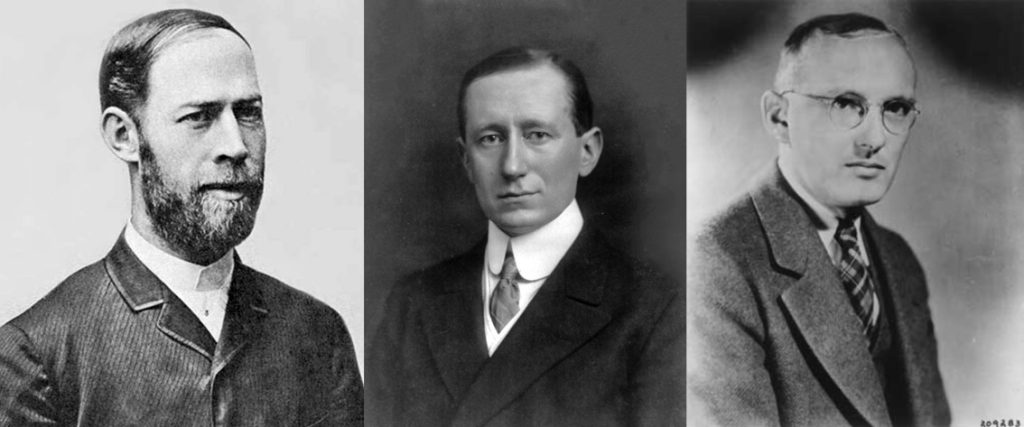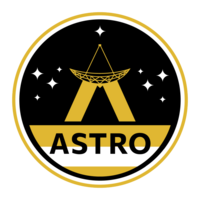RADIO WAVES AND THEIR SIGNIFICANCE IN SCIENCE AND TECHNOLOGY
24 MAY 2024 | Konstantinos Karathanas
«I do not think that the radio waves I have discovered will have any practical application.»
-Heinrich Hertz
Introduction: How have radio waves changed the world?
Think of a world without radio, TV, or telephones. It seems incomprehensible, doesn’t it? Yet, all of these devices are based on a form of electromagnetic radiation. So, let’s embark on a thrilling journey to explore these mysterious waves that have revolutionized our world.

So, what are radio waves?
Radio waves are a type of electromagnetic radiation, like visible light, X-rays, and microwaves. They have the longest wavelengths in the electromagnetic spectrum, ranging from approximately 1 millimeter to 100.000 kilometers. This characteristic allows them to travel far distances and to pass through obstacles, such as walls and clouds [1][2][3].
Fun fact: In a vacuum, radio waves travel at the speed of light, which is 299.792.458 meters per second.
How are radio waves generated?
Radio waves are generated when an electric charge is accelerated. This usually occurs through an antenna. When an alternating electric current passes through an antenna, it generates oscillating electric and magnetic fields around it. These fields are combined to form a radio wave [4][5][6].

The leaders
1893: Nikola Tesla demonstrated an innovative use of wireless technology by performing the first-ever presentation of wireless energy transmission. His experiments laid the foundation for radio waves' rise in the use of communication.
1895: Guglielmo Marconi conducted the first wireless radio broadcast, laying the foundation for modern communications.
Fun fact: In 1938, Orson Welles aired such a realistic radio broadcast of a narration of the novel “The War of the Worlds” by H.G Wells, that the listeners believed a real alien invasion was in progress! Wells was forced to stop the broadcast, reassuring the audience that it was just fiction.
Fun fact: In Greece, the first radio broadcast was aired in 1928 by Timo Chrisafi with the help of a makeshift construction that was broadcasting from the terrace of his home. In 1938 the first national radio was established, the “NRF” (National Radio Foundation), which today is known as “HBC” (Hellenic Broadcasting Corporation).
1933: Karl Jansky discovered radio waves, coming from space, founding the science of Radio-Astronomy. This discovery launched a new age in astronomical research since it allowed us to study the universe from a new perspective [6][9].
Fun fact: Radio waves are used to study not only galaxies that are far away but also subjects that are close to us, such as the center of our planet!

Radio waves in our lives
Unlocking the universe’s secrets: Radio-astronomers use massive radio telescopes, like the Vert Large Array, to study subjects that are far away, such as galaxies, stars, and planets.
Innovations in medical imaging: By using Magnetic Resonance Imaging (MRI), doctors use magnetic fields and radio waves to provide detailed images of the soft tissues of the human body [3][8].
Radars: Radio waves are used to detect airplanes, ships, and weather phenomena, providing crucial information for safe navigation and meteorology.
Despite the traditional use in communications and astronomy, radio waves have found new applications in the 21st century.
GPS: The Global Positioning System (GPS) uses radio waves transmitted from satellites to pinpoint our location on Earth with incredible accuracy.
RFID: Radio Frequency Identification (RFID) uses radio waves to read and record information, stored in tags attached to items, revolutionizing the supply chain and inventory management.
The future of radio waves: Where can they lead us?
As technology is advancing at a rapid rate, radio waves remain the center of innovation. Let’s take a look at some of the fascinating directions that scientific research can follow:
5G and beyond: The 5G cellular network promises lightning-fast speeds, low latency, and massive device connection. Other scientists are already looking beyond 5G, exploring new zones and technologies for even more impressive accomplishments.
Next generation Radio-astronomy: Massive new radio telescopes, like the Square Kilometre Array, will allow us to detect the faintest signals from the depths of space. Just imagine all the discoveries that are waiting for us [14]!
Radio waves in Medicine: From advanced imaging techniques to innovative treatments, radio waves can revolutionize the way we diagnose and treat patients [15]. Specifically, radio frequency (RF) ablation is used to treat arrhythmias and certain types of cancer by destroying unwanted tissue with heat generated by radio waves.
Radio waves and space exploration: As humankind is turning to planets and stars, radio waves can be vitally important for the continuation of communication between astronauts and the Earth [16]. Moreover, the search for extraterrestrial intelligence (SETI) and the study of planetary systems in other galaxies, are getting more and more feasible with the use of radio waves. New telescopes, like the James Webb Space Telescope, will let us explore outer planets and search for possible signs of life. Maybe one day, we will get a radiophonic “hello!” from a cosmic neighborhood afar [16]!
Epilogue
Radio waves are truly an invisible “miracle” of nature, that has profoundly influenced our lives. From our day-to-day life to the far end of the universe, radio waves have opened new horizons for humankind. The next time you are listening to the radio or using your phone, take a moment to appreciate these invisible waves that travel around us, as well as the scientists who helped us domesticate them. Just imagine: What secrets will radio waves unveil in the next 100 years? Who knows what surprises the future has in store for us, as we continue to explore the endless opportunities of these invisible waves.
Glossary
Electromagnetic spectrum: the full range of electromagnetic radiation, from low-frequency radio waves to high energy Gamma rays.
Frequency: the number of rounds of one wave that passes from a stable point in one second, measured in Hertz (Hz).
Wavelength: the distance between consecutive peaks or valleys of a wave, mostly symbolized with an λ (lambda).
Antenna: a construction that is used for the emission or reception of radio waves.
Editorial Review: Marilenia Zoi
Scientific Review: Evi Koursoumpa
Translation: Margarita Papastergiou
BIBLIOGRAPHY
[1] NASA. (2021). Radio Waves. NASA Science. https://science.nasa.gov/ems/05_radiowaves
[2] Urone, P. P., Hinrichs, R., Dirks, K., & Sharma, M. (2020). College Physics. OpenStax. https://openstax.org/details/books/college-physics
[3] NRAO. (n.d.). What Are Radio Waves? National Radio Astronomy Observatory. https://public.nrao.edu/radio-astronomy/what-are-radio-waves/
[4] Ellingson, S. W. (2016). Radio Systems Engineering. Cambridge University Press. https://doi.org/10.1017/CBO9781107705852
[5] Seybold, J. S. (2005). Introduction to RF Propagation. John Wiley & Sons. https://doi.org/10.1002/0471743690
[6] Tyson, J., & Goldsmith, D. (2020). How Radio Works. HowStuffWorks. https://electronics.howstuffworks.com/radio.htm
[7] Wikimedia Commons (2012). Radio Waves. Wikimedia Commons https://commons.wikimedia.org/wiki/File:Radio_waves.svg
[8] Sullivan, W. T. (2009). Cosmic Noise: A History of Early Radio Astronomy. Cambridge University Press.
[9] Feynman, R. P., Leighton, R. B., & Sands, M. (2011). The Feynman lectures on physics, Vol. I: The new millennium edition: mainly mechanics, radiation, and heat (Vol. 1). Basic books.
[10] Wikimedia Commons (2011). Heinrich Rudolf Hertz. Wikimedia Commons https://commons.wikimedia.org/wiki/File:Heinrich_Rudolf_Hertz.jpg
[11] Wikimedia Commons (2017). Guglielmo Marconi. Wikimedia Commons https://commons.wikimedia.org/wiki/File:Guglielmo_Marconi.jpg
